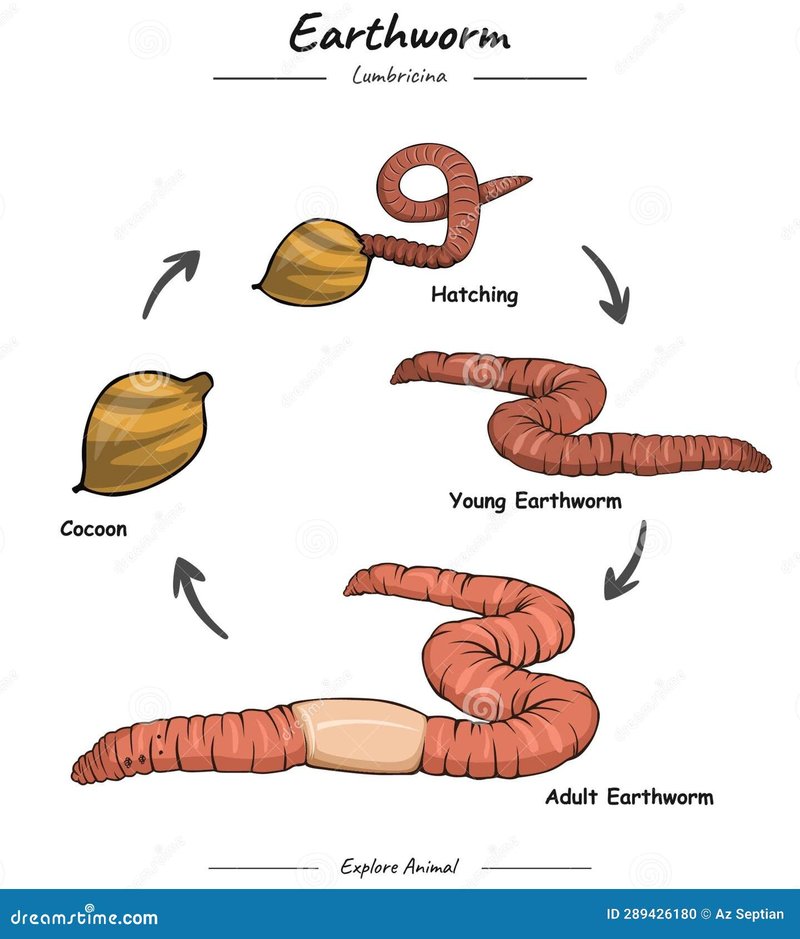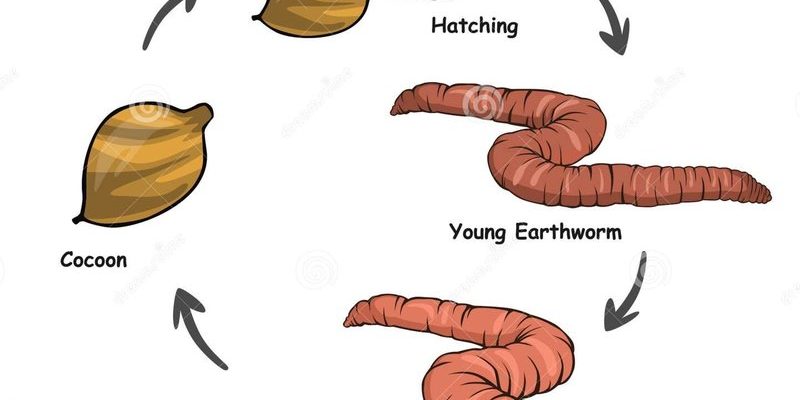
So, how exactly does an earthworm go from a tiny egg to an important player in the ecosystem? It’s quite the journey, and it’s full of fascinating stages and transformations. Grab your coffee, and let’s dig into the lifecycle of a common earthworm, uncovering the magic that happens below the surface.
Understanding Earthworm Anatomy
Before we dive into the lifecycle, it helps to know a bit about what an earthworm actually is. Earthworms belong to the class Oligochaeta and are segmented worms. Their bodies are long, cylindrical, and made up of many segments, which allow them to move smoothly through the soil.
Each segment plays a crucial role. For instance, the *clitellum* is a thickened part of the body that becomes especially important during reproduction. It produces a mucus ring that helps in the fertilization and development of the eggs. So, while they may seem simple, every part of an earthworm’s body is designed for specific functions.
Why are their bodies so important? Well, they don’t have lungs. Instead, they breathe through their skin, which means their environment must be moist for them to survive. If the soil dries out, they can’t breathe, and that’s a big problem for our little earth friends.
The Reproductive Stage
The lifecycle of an earthworm begins with reproduction, which is quite a unique process. Earthworms are hermaphrodites, meaning each worm has both male and female reproductive organs. When two earthworms mate, they align themselves ventrally and exchange sperm.
After mating, they create a mucus ring using that clitellum we talked about earlier. This ring holds the fertilized eggs, and as it slips off the worm’s body, it forms a protective cocoon. The cocoon is like a tiny treasure chest, protecting the eggs from the outside world and keeping them safe until they’re ready to hatch.
It’s fascinating to think of two earthworms working together to ensure the next generation. This partnership not only strengthens their species but helps maintain the soil health that benefits all creatures—humans included!
Egg Stage: Waiting for New Life
Once the cocoon is formed, it drops into the soil. Inside this tiny protective environment, the fertilized eggs start to develop. The egg stage can last anywhere from 2 to 4 weeks, depending on environmental conditions like moisture and temperature.
When it’s time, the baby worms, called hatchlings, emerge. These tiny earthworms are about the size of a grain of rice. They’re not quite ready for the world yet—they need to grow and mature. They start eating organic matter in the soil, like decomposing leaves and plant material, which helps them grow strong.
You might wonder, how do they know when it’s time to hatch? Well, it’s all about the right conditions! If the soil is moist and warm enough, they know it’s a safe time to break free. Nature has its own way of ensuring that life continues.
Growth and Development: The Adolescent Years
As hatchlings, these tiny worms begin their journey through life. They grow quite quickly, feeding on organic materials around them. Their diet mainly consists of decaying leaves, dead plants, and other organic debris. This diet not only helps them grow but also enriches the soil, making it fertile for other plants.
During this growth phase, the young worms undergo several molts. Each time they shed their skin, they grow a bit larger. This process can be fascinating to observe; each molt represents a step toward adulthood.
After about 2 to 3 months, these young earthworms can become mature adults themselves. Once they reach maturity, they can mate and start the cycle all over again. It’s a continuous process—the earthworm lifecycle is always at play, no matter the season.
Adult Stage: A Life of Contribution
Once they’ve matured, earthworms spend their days working diligently in the soil. They may not have flashy jobs, but they contribute significantly to the ecosystem. They burrow through the soil, which aerates it and allows water and nutrients to penetrate deeper. This helps roots grow and plants thrive.
Adults can live for several years—some even up to 8 years, depending on conditions. During their lifetime, they remain busy decomposing organic matter. Through this natural recycling process, they create what’s known as worm castings—nutrient-rich waste that acts as a natural fertilizer.
Imagine a world without earthworms, where soil becomes compact and plants struggle to grow. It’s easy to see why earthworms are often called “nature’s plow.” They don’t just live in the soil, they improve it, ensuring a healthy environment for the plants and creatures that depend on it.
The Importance of Earthworms in Our Ecosystem
So, why should we care about the lifecycle of common earthworms? Besides their role in soil health, these little guys play a vital part in food chains. Birds, moles, and other animals rely on earthworms as a food source. If the population of earthworms declines, it affects many other creatures in the ecosystem.
Moreover, they help in carbon cycling and soil fertility, playing a crucial role in combating climate change. By enhancing soil structure and fertility, they promote sustainable agriculture practices. Farmers and gardeners who recognize the value of earthworms often find that their presence leads to healthier plants and higher yields.
Here’s the thing: every earthworm contributes to a much larger picture. They’re small but mighty, and protecting their habitats is essential for maintaining biodiversity and environmental health.
How to Support Earthworm Populations
As we’ve seen, earthworms are vital to our environment, so it’s important to support their populations. Here are a few simple ways you can help:
- Avoid chemical fertilizers: Instead, opt for organic options.
- Practice composting: This enriches the soil and provides food for earthworms.
- Build a worm bin: This helps create a safe habitat and produces rich compost.
- Plant native vegetation: These plants are better adapted to support local earthworm species.
By taking these steps, you’re not just helping earthworms thrive—you’re also contributing to a healthier planet.
In conclusion, the lifecycle of a common earthworm is a beautiful example of nature’s intricate design. From their reproductive habits to their role in the ecosystem, these little creatures deserve our attention and respect. The next time you see a worm wriggling in the soil, remember just how much they matter and consider how you can help them continue their important work.

